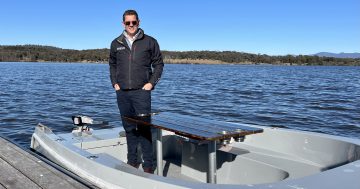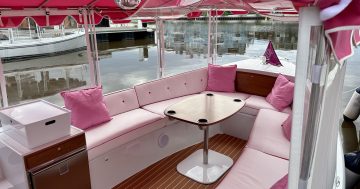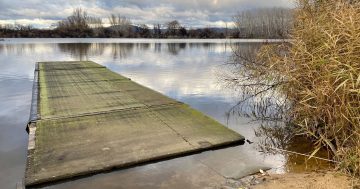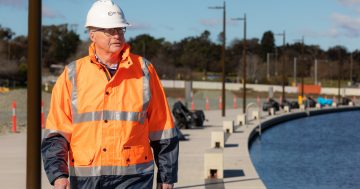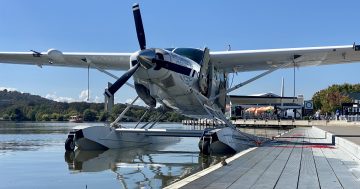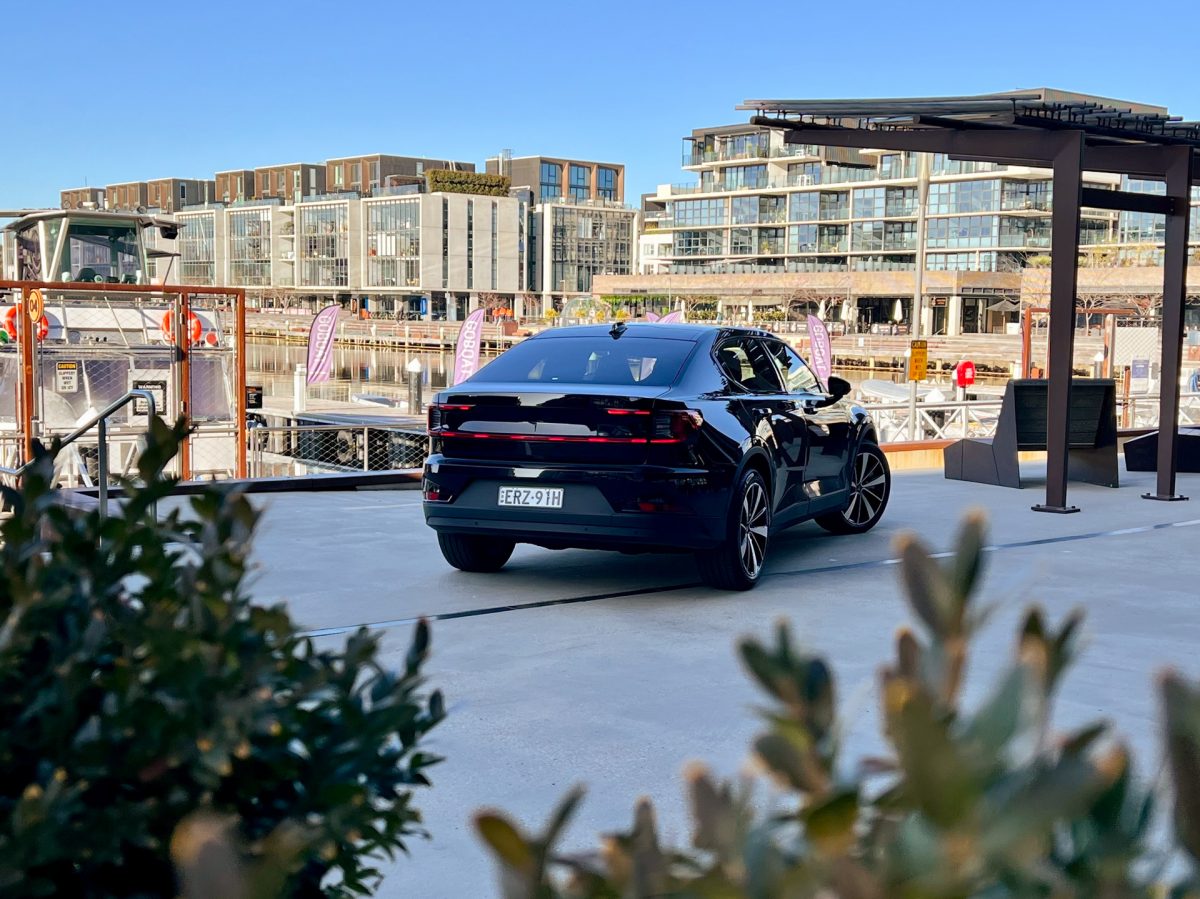
The Polestar 2 eyeing off the competition at the Kingston Foreshore GoBoat dock. Photos: James Coleman.
According to the latest census, there are 453,300 people in the ACT and 318,148 registered vehicles. That’s a lot of cars, many of which are coursing along Canberra’s roads between 7 and 9 am every weekday. And there’ll likely be more traffic as the city grows.
Yes, buses, trams and bicycles are an option for some, but is there another way to relieve the road? I mean, there’s already a big patch of ‘wasted’ wet space in the middle of the city we could use, right?
More than five years ago, Nick Tyrell noticed this too. Fresh back from touring Stockholm on an electric boat, he was looking out over Lake Burley Griffin when he thought how nice it would be to bring that same experience home.
“Nearly every day, we were crossing the bridge over the lake,” he says. “It’s such a great asset for the city but so underused.”
GoBoat is now offered in Sydney, Melbourne and Brisbane and is about to celebrate its fifth anniversary here in Canberra. It’s a pleasure craft first and foremost, giving up to eight people the opportunity to sit back and revel in the views over some cheese and a fine prosecco.
But could it be more? There’s only one way to find out: to see how long it takes the two of us to get from Kingston Foreshore to Acton Foreshore, from the East Basin of the lake to the West. And I have the perfect competitor to the GoBoat.





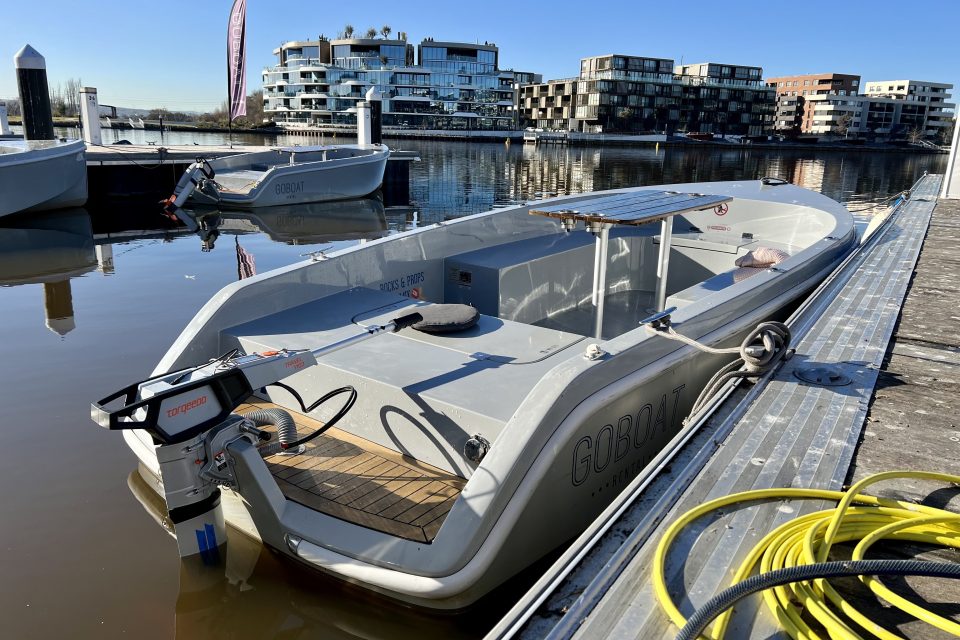
Polestar arrived in Australia earlier this year as the electric sister to Volvo. If Tesla is the Apple of the car world, Polestar is the Android.
Literally the Android – the Polestar 2 is the first car to use Google Assistant to operate everything from the radio to navigation and heating to air-conditioning. Even the seat heaters can power up with a simple, “Hey Google, my bottom is cold.”
But where Tesla might be all about fart noises and brain-jostling acceleration, Polestar is more. There’s only one word for it: Swedish. Nothing was made without Lars and Mikael first analysing its every dimension.
The seat fabric is made from recycled plastic bottles and the carpets from recycled fishing nets. The expansive glass roof is treated to resist heat better than metal. The gear selector is hollowed out so back-seat passengers can admire the craftsmanship on the volume knob, and the wing mirrors are frameless and mounted on gimbals.
Polestar even tallied up the carbon involved in the making of every single little thing, down to the rather drab-looking key fob. It turns out the lack of chrome makes it easier to recycle.
Of course, you’re probably expecting some bad news about price – when the EV promises bring you crashing back to earth. It’s not all bad news.
The Polestar undercuts Tesla on price. The Standard Range Single Motor starts at $59,900, compared to $65,500 for the cheapest Model 3. And that includes a charging cable in the ‘froot’ (front boot), unlike Tesla.
Nick loves his cars and drives a BMW E46 M3 – “the last of the good-looking BMWs”. He has also effectively done my job and written car reviews on a freelance basis for the motoring website, Exhaust Notes Australia. In a heartbeat, he agrees to take the helm of the Polestar 2.
But to make sure this is a fair contest between boat and car, I’m not telling him how the Polestar works. How there isn’t a start button, for example.
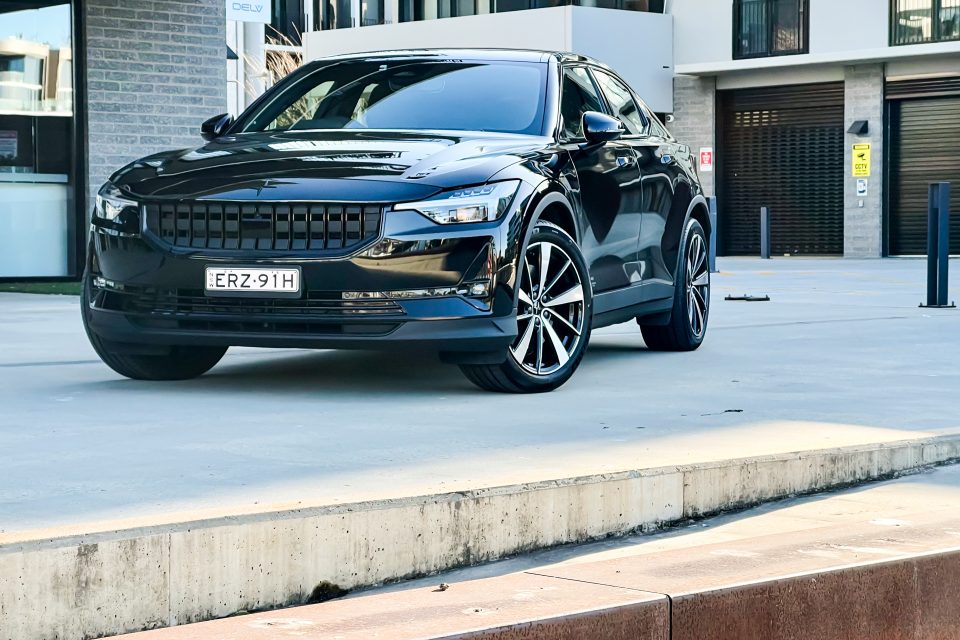




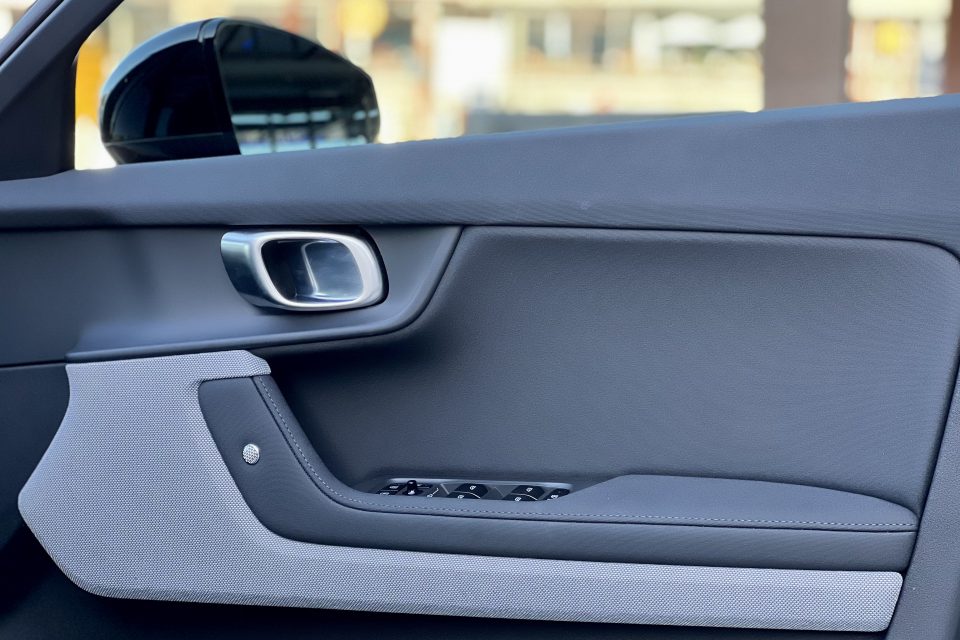
He is considerably more helpful.
At the time Nick was trying to launch GoBoat, the ACT had laws in place prohibiting anyone without a boat licence from taking to the lake in one. These had to be altered to match other jurisdictions around Australia and the world.
This means the GoBoat you hire today is limited to a top speed of five knots (about 9 km/h), but Nick breaks out his laptop and tunes the motor on mine up to 10 knots (about 18 km/h), the legal top speed for the unlicensed.
“Otherwise, you’ll take an hour,” he says.
Once you get over the fact the steering is right for left and left for right, the GoBoat is easy to operate. In no time, I’m out of Kingston and heading for Commonwealth Avenue Bridge. I presume Nick is still hunting around for the button he’s actually already sitting on.
The GoBoat is basically the nautical version of the Polestar. It’s imported from Scandinavia, the fibreglass used in the hull is sourced from recycled plastic bottles and there’s hardly any noise or wake from the electric motor.
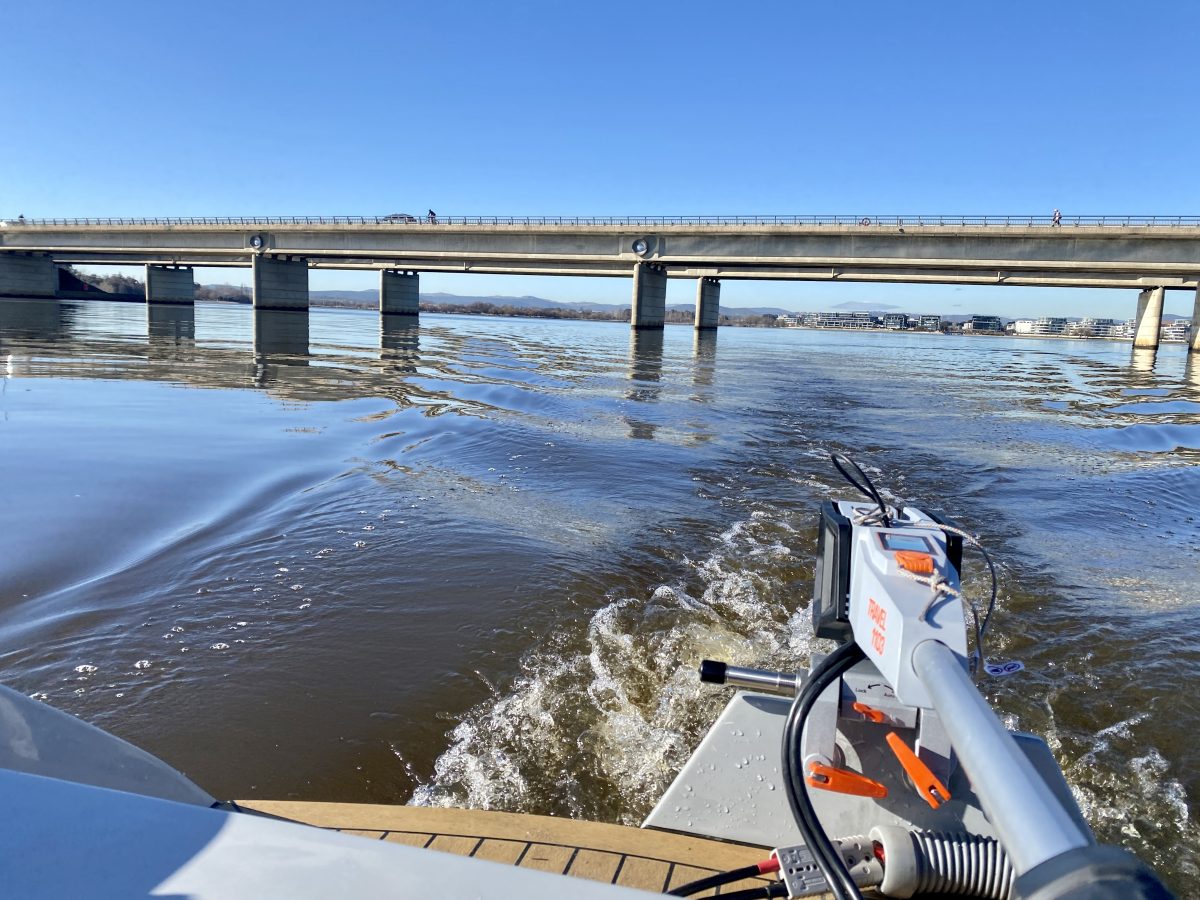
GoBoating on the lake, churning up that lovely, clear water. Photo: James Coleman.
A gleaming black body glides along the distant shoreline, telling me Nick is now underway and probably enjoying the heated steering wheel. I, meanwhile, have been supplied with a knitted blanket. Fortunately, it’s a perfect morning.
We’ve agreed to meet at a jetty on the far side of the Acton Peninsula, and about half an hour and two bridges of angelic commuting later the piercing ‘Thor’s Hammer’ daytime-running lights of the Polestar hove into view.
I lost, but what a way to travel. And from where he was, Nick agrees. Win-win.
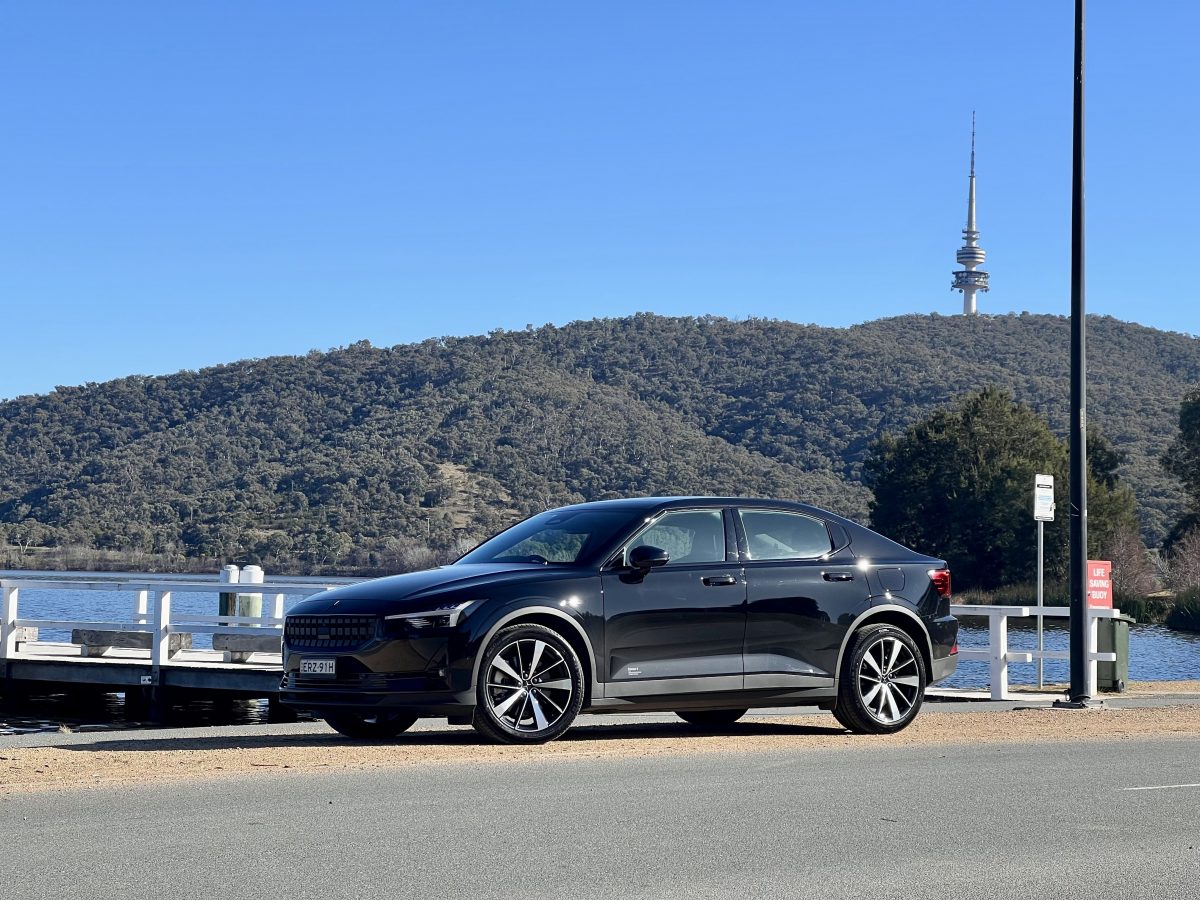
At the finish line.
2022 Polestar 2 Long Range Single Motor
- $64,990
- 78 kWh battery, 170 kW / 330 Nm electric motor
- 0-100 km/h in 7.4 seconds
- 540 km estimated range.
GoBoat is open to online bookings all week, ranging from $129 for one hour to $269 for three hours.
Polestar Australia doesn’t have a retail space in Canberra yet, but the brand will bring five examples to the upcoming EV Expo at EPIC from 5 to 7 August. These will be available for test drives.
Region Media has no commercial arrangement with Polestar Australia or GoBoat.












